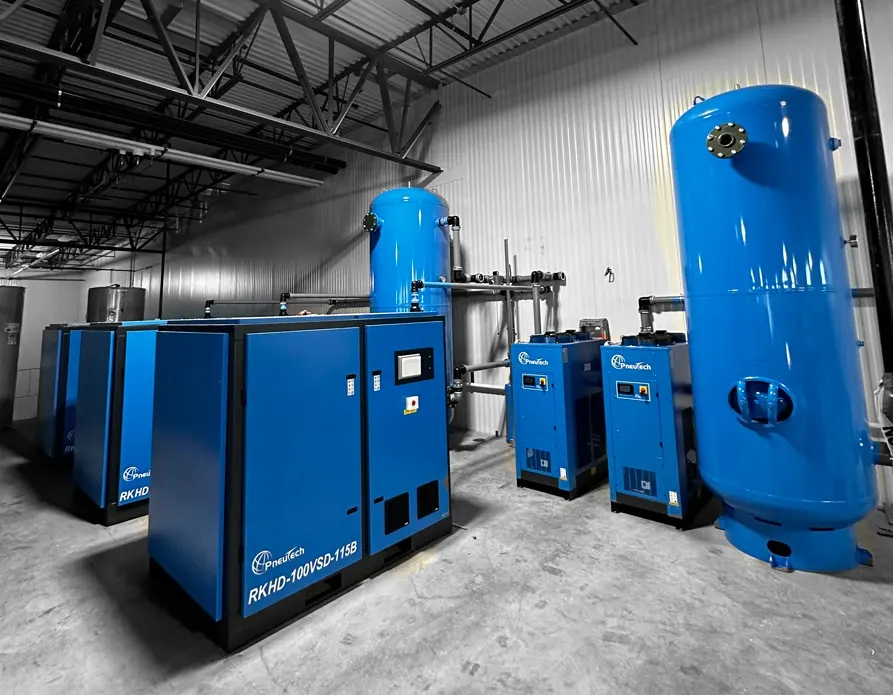Compressed air plays a vital role in driving productivity across a broad range of industrial applications. At a pressure level of PSI, compressed air systems are engineered to meet the demands of high-performance operations, where consistency, reliability, and power are non-negotiable. These systems are essential in environments that rely on continuous and efficient operation, such as manufacturing, automotive production, food processing, and heavy equipment industries. The compressed air at this level is particularly well-suited for powering pneumatic tools, actuators, and machinery that require sustained high pressure to function optimally. It also enhances the speed and precision of automation systems, which are increasingly at the heart of modern production lines. One of the key benefits of using high-pressure compressed air in industrial settings is its ability to deliver energy in a clean and controlled manner. Unlike hydraulic systems that rely on fluids, air systems minimize the risk of contamination and leakage, making them ideal for sensitive environments such as pharmaceuticals or electronics manufacturing.

Moreover, compressed air can be stored in tanks and distributed through networks of pipes, allowing for flexibility in system design and scalability as production demands grow. The PSI pressure range provides the power needed for more intensive applications, including material handling, sandblasting, injection molding, and even laser cutting, where maintaining constant pressure is critical for quality and performance. The versatility of high-pressure compressed air also means it can be adapted to various processes without extensive modification. This adaptability reduces downtime and simplifies maintenance, two factors that significantly impact productivity. Many systems are now equipped with smart sensors and automated controls that monitor air usage, pressure levels, and system performance in real-time. These technological advancements help prevent unexpected failures and ensure that the system runs efficiently, reducing energy consumption and operational costs. Compressed air systems at this level often integrate seamlessly with other industrial infrastructure, supporting synchronized operations across different departments and enhancing workflow continuity.
Safety is another important consideration in the use of compressed air at elevated pressures. Modern systems are designed with multiple safety features, including pressure regulators, relief valves, and protective enclosures that safeguard both equipment and personnel. Proper training and adherence to safety standards are essential, but the robust engineering of these systems offers an additional layer of protection, allowing companies to operate with confidence. The consistent performance and durability of a high-pressure compressed air system contribute directly to increased uptime and reduced maintenance intervals, which are critical metrics in measuring productivity. Compressed air at PSI is more than just a source of power it is a cornerstone of industrial productivity. By enabling faster processes, supporting complex automation, and ensuring safety and efficiency, these systems provide a strategic advantage for businesses aiming to maintain high output and quality. Whether in a heavy-duty fabrication plant or a precision assembly line, visit mylocalservices.com the ability to deliver consistent, reliable power through compressed air translates into real gains in operational effectiveness and long-term performance.
